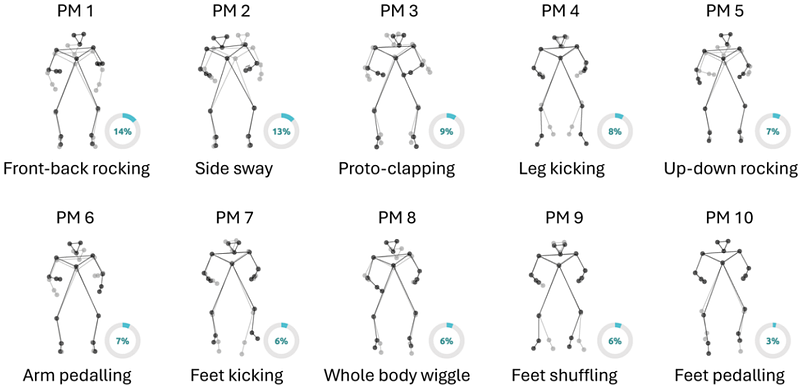Development of Auditory and Spontaneous Movement Responses to Music over the First Year of Life

Development of Auditory and Spontaneous Movement Responses to Music over the First Year of Life
Nguyen, T.; Bigand, F.; Reisner, S.; Koul, A.; Bianco, R.; Markova, G.; Hoehl, S.; Novembre, G.
AbstractHumans across cultures not only share the ability to recognise music but also respond to it through movement. While the sensory encoding of music is well-studied, when and how infants naturally start moving to music is largely unexplored. This study simultaneously investigates infants neural (auditory) responses and spontaneous movements to music during the first year of life. Neural activity (EEG) and body kinematics (markerless pose estimation) were recorded from 79 infants (aged 3, 6, and 12 months) listening to refrains of childrens music, along with shuffled, high-pitched, and low-pitched versions of the same songs. Neural data revealed that, across all ages, infants exhibit enhanced auditory responses to music compared to shuffled music, indicating that auditory encoding of music emerges early in development. Movement data revealed a different outcome. While coarse auditory-motor coupling is present at all ages, more complex structured movement patterns emerge in response to music only by 12 months. Notably, no age group demonstrated evidence of coordinated movements to music. Additionally, enhanced auditory responses to high vs low pitch were only evident at 6 months, while infants movements were better predicted by high-pitched compared to low-pitched music at all ages. This study provides initial insights into how the developing brain gradually transforms music into spontaneous movements of increasing complexity.